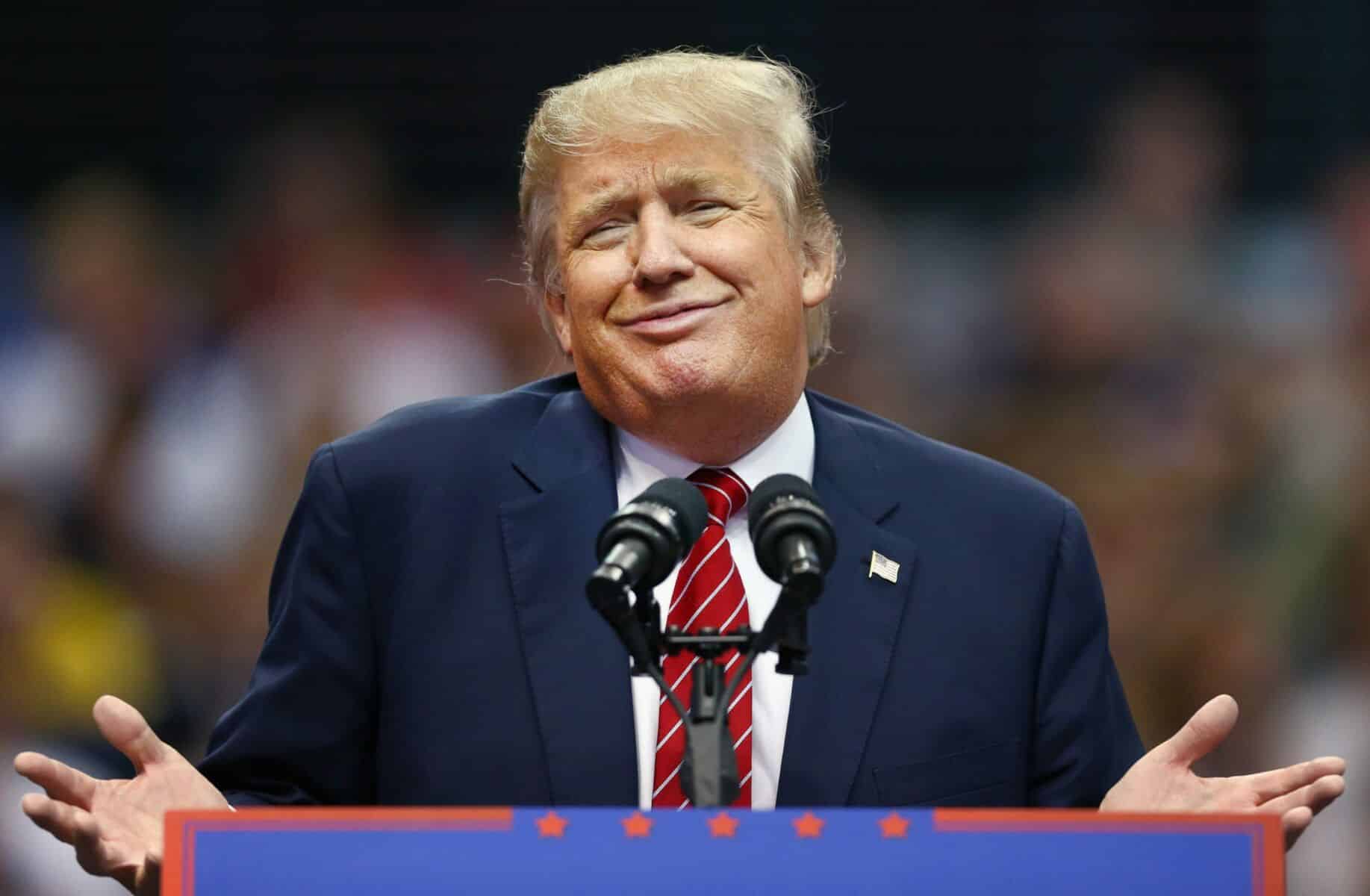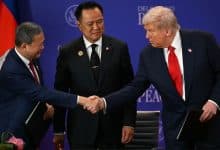Trump’s metal meltdown: Steel yourself for the latest tariff tiff

Donald Trump announced his intention to impose a steep 25% tariff on all steel and aluminium imports into the United States, a move that promises to heat up trade tensions and could potentially throw a spanner in the works for America’s key trading relationships.
Chatting with reporters aboard Air Force One yesterday, February 9, the US president confirmed that these levies would blanket imports from all corners of the globe.
When pressed about whether major suppliers like Mexico and Canada might be spared, he remained firm, saying the tariffs would include “everybody,” although intriguingly, he stopped short of pinning down a date for their roll-out.
The US president also revealed plans for reciprocal tariffs on countries that impose taxes on US imports. These new measures are expected to be unwrapped “almost immediately” after the official announcement, adding another layer to Trump’s complex tariff tapestry.
This latest declaration is just another chapter in Trump’s saga of tariff threats that have kept global markets on edge over recent weeks. His approach has been inconsistent, fluctuating between imposing tariffs on China while pulling back from similar moves against Canada and Mexico.
Data from Morgan Stanley points out America’s heavy reliance on aluminium imports from places like Canada, the United Arab Emirates, and Mexico to meet more than 80% of its needs by 2023.
Though steel imports account for a smaller fraction of consumption, they’re indispensable for specialty industries such as aerospace and automotive manufacturing.
Trump did gesture towards settling some scores in his first term by granting oil companies exemptions from these metal tariffs, showing that exceptions are not beyond reach.
Following his latest announcement, Asian markets barely batted an eye. By late morning trading in Singapore, iron ore prices, a critical ingredient in steel manufacturing, climbed a smidgen by 0.1%.
Over on the London Metal Exchange, aluminium futures saw a modest rise, mirrored by a 0.5% uptick in US futures on Comex amidst light trading.
Horizon Insights analyst Mengtian Jiang remarked, “This round of 25% tariff on steel is definitely bearish on the market’s sentiment for ferrous commodities. It could take two to three days for the market to digest with price weakening.”
The tightrope many buyers and sellers have been walking just got shakier. Steel and aluminium exports from countries like South Korea, whose steel exports to the US hover at 70% of their pre-Trump tariff levels, now face the tough task of finding new markets.
Chinese metal imports
One issue Trump skirted was the potential for double tariffs on Chinese metal imports, given the existing 10% duties on Chinese goods. Regardless, Beijing has fired back with its own retaliatory tariffs targeting US$14 billion worth of US imports, set to kick in today.
Down Under, Australian Prime Minister Anthony Albanese announced plans to dial up Trump, aiming to secure exemptions for Australia’s steel and aluminium sectors.
While Trump’s tariff tango remains shrouded in mystery, previous reversals suggest he sees these moves primarily as leverage. This sentiment was echoed by Navigate Commodities’ Managing Director, Atilla Widnell, who issued caution.
“As we’ve already learnt from President Trump’s first few weeks in office, it’s best not to second-guess, or even third-guess, his tariff strategy until they’re firmly in place and actively applied to trade.”
March has been marked as the month to watch, with postponed tariffs on Mexican and Canadian imports hanging in the balance as both countries have dangled minor border security boosts. Meanwhile, tariffs on pharmaceuticals, oil, semiconductors, and potentially European Union goods are floating up for consideration.
Trump has oscillated between cracking down on Beijing and playing ball with President Xi Jinping, showing flashes of wanting a fairer trade setup. He’s ordered a review of the 2020 Phase One trade deal, suggesting that negotiations with China are far from over.
Trade deficits
Tariffs remain at the heart of Trump’s bid to reshape the American economy by narrowing trade deficits and drumming up new revenue streams to bankroll his tax ambitions. Economists continue to wave red flags, warning these moves could disrupt US manufacturers, inflate consumer prices, and worsen trade flows—potentially undermining the fiscal goals.
Steel and aluminium duties were among Trump’s inaugural-term highlights, with a 25% steel tariff and a 10% aluminium duty introduced in 2018 under the guise of national security.
Now, as US steelmakers grapple with imports eroding profits, they’re tasked with ramping up production to fill the void these tariffs could create.
In the background looms the saga of Japan’s Nippon Steel Corporation and its thwarted attempt to acquire US Steel Corporation for US$14.1 billion (approximately 504 billion baht).
Both Trump and former President Joe Biden had nixed the deal, leaving Nippon Steel to consider an investment, a move Trump supports, provided it doesn’t equate to a controlling stake, reported Bangkok Post.
As the courtroom drama unfolds, with both firms challenging the US block, the clock ticks on Trump’s escalating trade tally. Will his tariff gambits prove fruitful, or is the world bracing for a bumpy ride ahead?
Latest Thailand News
Follow The Thaiger on Google News:


























